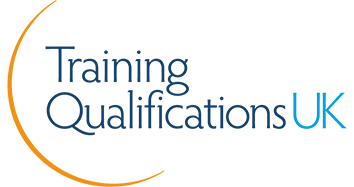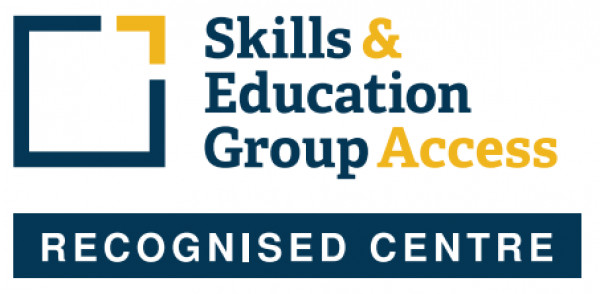Teaching is arguably one of the most rewarding jobs you can do. Whether in a primary or secondary setting, teachers shape minds and inspire children to achieve.
They nurture pupils and students through the core elements of education through to gaining their qualifications.
It can’t be overstated how important teachers are to the future of society. With a ‘severe’ teacher shortage (at time of writing) there has never been a better time to make a career change.
According to official figures, the government has missed its recruitment targets for teachers for seven consecutive years.
Subjects particularly struggling to find teachers are physics, maths and foreign languages.
This means once you qualify as a teacher you have a good chance of getting a job. However, you need to get on to a teacher training course first.
It can seem daunting, especially if you have been out of education for a while. But no matter your circumstances, becoming a teacher is an achievable ambition.
There are of course minimum requirements that all potential teachers must meet. This is non-negotiable, however arbitrary it may seem.

Routes into Teaching
There are two routes into teaching – studying a QTS or PGCE at university or on the job training.
The first route means you study at university, get a qualification, and then apply for teaching jobs. Arguably the most common route into teaching.
The second route means you get a job and then get a qualification. There are two ways this can be approached.
The first is with a Postgraduate Teaching Apprenticeship. This approach will give you an 80/20 split between teaching and studying. During your final term, you will need to take an End-Point Assessment. This will effectively determine if you have the skills required to qualify as a teacher.
Upon completion of the teaching apprenticeship, you will be awarded a Qualified Teacher Status degree.
The other ‘on the job’ route is called School Direct and – much like a teaching apprenticeship revolves around on the job training while you study towards a QTS.
The only real difference is that the schools recruit trainee teachers directly and they cover the cost of your studies. It could be that you must work at the school for a year after graduating or pay back the course fees.
Independent schools are especially interested in school direct trainee teachers. They look for academically capable undergraduates and graduates with a relevant degree to the subject they will teach.
If you want to work in the independent sector you can apply for a teaching job and get trained by the school.
Regardless of the approach the best thing to do is ensure you will gain a Qualified Teacher Status (QTS) qualification at the end of it. This is a recognised qualification both in the UK and overseas giving you options should you choose to move on. So without one you effectively won’t be able to teach anywhere else.
Both QTS and PGCE (post-graduate certificate in education) qualifications allow you to work in both independent and state schools.
Minimum Requirements
No matter what kind of teacher you want to be, if you want to step into teaching you must have GCSE Maths and English grade C/4 or above. This is a base line standard no matter what subject you want to teach.
If you already have a degree you will need to study a PGCE. If you’re going into secondary education, then the degree you have will more or less dictate the subject you will teach.
Although there are instances when a teacher with a background in multiple subjects can be asked to teach an alternative. A biologist teaching chemistry, for example.
If you don’t have a degree at all you can study a QTS (qualified teacher status) degree.
There are three types of QTS degrees:
- Bachelor of Education degrees and most commonly associated with those wanting to become primary school teachers
- Bachelor of Arts or Bachelor of Science degrees. These are taken up by students wanting to train to be secondary school teachers
Study focuses more intently on acquiring specialist knowledge in your chosen subject, underpinned by teaching skills.
To enrol on any kind of degree course you will need relevant qualifications such as A Levels or equivalent. Without these there are few universities that would accept you.
The possible exception may be that you are already a qualified and practicing teaching assistant. However, always check with your chosen university before you apply.
Getting the Qualifications
If you don’t meet the minimum requirements to become a teacher, then you will have to return to study. The extent to which you need to study will be based on your existing qualifications. Remember, you will need GCSE Maths and English at grade C/4 in addition to anything else you want to study.
Assuming you have those then you’ll need to decide to either study A Levels or an Access to Higher Education Diploma. Both will get you accepted into university, but they’ll get you there via slightly different paths.
A Levels
Depending on whether you study a standard degree or QTS degree, the requirements may differ. And you may also find there are some restrictions regarding the subjects you can study.
Regardless, in most instances, you will need 2 or 3 A Levels, one of which must be in your chosen subject for secondary teaching.
The big advantage for A Levels is the variety studying multiple subjects brings. It keeps the learning fresh. Moreover, if your subjects complement each other you can start to draw from all your subjects to enrich your overall level of work.
The only two things you need to consider before enrolling on to an A Level course:
- You’re looking at – realistically – a minimum 2-year commitment to get your qualifications.
- A Levels, like GCSEs are graded so you may find that your chosen university has a minimum grade requirement.
Access to HE Diploma
The alternative to A Levels is the Access to Higher Education Diploma. This qualification was created specifically to prepare students for university.
The content of the diploma focuses specifically around the degree you want to study. In this case teaching. The diploma provides you with the foundation you need to build your knowledge and skills.
The one thing to note is not all Access to HE Diplomas are the same. However the emphasis is on primary education. This is purely because secondary level teaching requires a foundation of knowledge in a specific subject.
Whereas primary teaching requires you to have a broader understanding as well as a strong grasp of developmental psychology etc.
If you want to be a secondary school teacher, A Levels undoubtedly provides you with a broader range of knowledge. You also have the luxury of taking subjects that will complement one another which will help you in the long term.
An Access to Higher Education Diploma in Education will specifically cover a range of topics to prepare you for teaching.
This will cover the developing child, the psychology of learning, development of education, developmental psychology and language acquisition.
You will also learn how to manage behaviour in the classroom, the sociology of education and safeguarding.
By the time you have completed the course you will be ready to take the next step on your journey to becoming a teacher.
It’s worth noting that while most universities accept Access to HE diplomas, a tiny minority don’t. If you choose to go down the Access to HE Diploma route, check with your preferred university before you enrol.
Assuming you meet all other requirements, all you need to do is choose which pathway is right for you.
The good news is you can study both A-levels and Access to HE Diplomas through distance learning institutes. So, you can fit your studies around your work and personal life.
There are no evening classes or having to give up work to study.
You just enrol and start your learning at a pace you’re comfortable with. With distance learning all the materials are ready and waiting. You get to dictate how and when you study.
Get in touch with our sales team or sign up today online. There are flexible payment terms available to help you spread the cost.
You will also have access to a dedicated tutor who will help you through the process. Check out our blog for useful tips on how to get the most out of your study experience.
Alternatively, download our FREE Access to Higher Education Diploma Faculty Brochure below for more information.




















